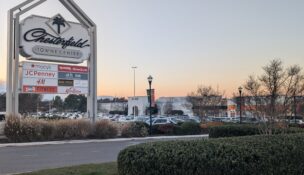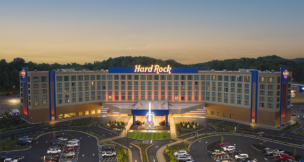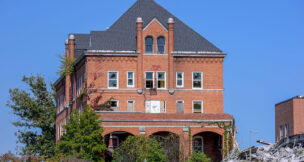Sequestration and government slow NoVa’s market
M.J. McAteer //October 30, 2013//
The presence of federal agencies and their attendant bevy of private contractors have long insulated Northern Virginia from economic downturns that can put the big chill on a commercial real estate market.
Yet these days the insulation has been stretched thin. With sequestration and a partial government shutdown in October — after Congress could find no middle ground in passing a funding bill — Uncle Sam’s presence provides only spotty protection.
The result is the highest total vacancy rates — 18.7 percent for the third quarter — that the region has seen in years.
“The NoVa market is being impacted severely by uncertainty in government,” says Scott Homa, vice president of Mid-Atlantic research for Jones Lang LaSalle, which tracks vacancy rates in market reports. “Contractors and federal agencies both are cutting back.”
While CBRE reported a slightly lower office vacancy rate in early third quarter data – 16.2 percent, up from 15.2 percent at the same time last year – it also fingered sequestration as exerting a drag on the market. CBRE said office leasing velocity of 5.4 million for the entire metro region was a third less than the third-quarter average of the past three years.
“Uncertainty has planted firm roots in the regional commercial real estate market … A wait-and-see attitude is likely to dominate … through the end of 2013,” Jeff Kottmeier, director of research for CBRE’s mid-Atlantic region, said in a prelude to his company’s preliminary third-quarter data.
Among the few bright spots? Projections for rent growth around the new Silver Line metro stations at Tysons, one of the submarkets seeing new projects. In fact, transit-oriented development seems to be taking off, with several projects in the works.
But that doesn’t mean sequestration isn’t taking a toll. The Office of Management and Budget (OMB) directed federal agencies last March to follow a “freeze the footprint” policy to restrict growth in office space. This policy has had a particularly adverse effect on the previously desirable Rosslyn-Ballston (RB) corridor.
The National Science Foundation (NSF), for example, is abandoning Ballston for the Eisenhower Avenue area of Alexandria, the same area that welcomed the Patent and Trademark Office in 2005. In Ballston, the NSF has 750,000 square feet in two buildings. When it relocates to Alexandria in 2017, it will have 660,000 square feet in one building. The General Services Administration estimates that the move will save $65 million on a 15-year lease.
The U.S. Fish and Wildlife Service also is decamping from three buildings in Ballston to a single building in Falls Church. The move will reduce its space by about 72,000 square feet and save the agency $3.8 million on a 15-year lease.
Both moves come on top of the Defense Intelligence Agency vacating more than 200,000 square feet of leased space in Clarendon, as well as space elsewhere, to consolidate its workforce in 523,482 square feet at Boston Properties’ Patriots Park in Reston Town Center.
The corridor has taken hits from government contractors, too: Northrop Grumman left for Merrifield and Boeing for Crystal City. “The RB corridor is facing a vacancy rate of 17 percent,” Homa says. “Historically, it has had a 5 percent vacancy rate.”
The area did hold on to the State Department’s Bureau of Diplomatic Security in Rosslyn, which renewed its 343,000-square-foot lease.
Defense contractors delay decisions
All of Northern Virginia is feeling the effect of worried government contractors delaying decisions about committing to new leases and making do with less. Space-saving strategies such as shared work areas instead of private offices, and “hoteling,” in which employees have to reserve work seats, are becoming the new norm in government and the private sector.
“The general demand vectors are not positive,” says Bill Quinby, executive vice president and co-regional manager for Studley, a firm that specializes in tenant services. “They suggest less need for office space going forward.”
“Nothing in Northern Virginia is in a great spot right now,” says Kelly McBride, a managing director at Jones Lang LaSalle’s Tysons office.
Among NoVa’s largest commercial submarkets, Southeast Fairfax, with a Class A office space vacancy rate that real estate research firm CoStar pegged at 34.9 percent at the end of the third quarter, has been hard hit. Contractors had been expected to relocate near a much-expanded Fort Belvoir, but that has yet to happen.
Alexandria and the Interstate 395 corridor, with a vacancy rate of 25.6 percent, are not much better off. Quinby says that the Crystal City area, heavily affected by the Base Realignment and Closure (BRAC) mandates of a few years ago, is saddled with obsolete space that may never be backfilled.
The Dulles Corridor (15.3 percent) and Greater Fairfax County (15.1 percent) are faring somewhat better, partly because office space there leases for less than space in areas closer to the capital ($27.88 and $31.92, respectively, versus $43.33 in the Rosslyn-Ballston Corridor).
Jones Lang LaSalle reports that, so far, leasing rates across NoVa have remained essentially unchanged despite reduction in demand. Still, landlords and various jurisdictions in the region are competing for scarce tenants by offering infrastructure improvements and free months of rent. Alexandria, for instance, offered the NSF a package of incentives widely believed to be worth millions.
A positive for NoVa’s market, ironically, may be the lack of new inventory, which could mitigate effects of reduced demand. The area saw no major projects delivered in the first two quarters of 2013, and Quinby says that only 1.8 million square feet of Class A space is in the pipeline now — about half of which is preleased. That figure may sound large, but it isn’t, he says, considering that NoVa has 205 million square feet of commercial space.
Some new additions
Of the new buildings in the pipeline, the largest is a 35-story, 538,092-square-foot office tower by the Rosslyn Metro. The speculative project, developed by Monday Properties before sequestration was imposed, was slated to open this fall but has no announced major tenants.
Two other big projects, according to CoStar, are at Tysons. The 22-story, 524,979-square-foot Tysons Tower is slated for delivery next year, as is Tysons Overlook — 300,000 square feet housed in an 11-story office tower. Despite sequestration and the delay in opening Metro’s Silver Line, Quinby says that development at Tysons is on track or even ahead of schedule.
Other major additions of commercial space include Monument View, 329,000 square feet of space in Crystal City that already has Boeing as a tenant, and Reston Station, a 15-story, 333,700-square-foot office building near the soon-to-be-open Wiehle Avenue stop on Metro’s Silver Line. Reston Town Center is a consistently desirable address for commercial tenants because of its blend of residential, retail and office space, which Tysons hopes eventually to mimic.
Last summer, Leidos, one of two companies resulting from the division of Science Applications International Corp. (SAIC), announced it would locate its headquarters at the town center. One SAIC executive was quoted as calling Reston “urban and edgy.” With Metro’s arrival, development should gain traction in the less-edgy outskirts of Reston, too.
Another possible near-term addition is a 20-story, 410,000-square-foot office that the Shooshan Co. wants to build in the RB corridor as the final component of an eight-building complex called Liberty Center. Leasing director Kevin Shooshan says it is “shovel-ready” and could break ground as early as this month. “But,” he adds, “the hopes are that some decisions will be made on Capitol Hill.”
Despite the negative impact of governmental gridlock on NoVa’s commercial real estate market, neither Quinby nor Homa feel cause for panic. Instead, they point to the region’s unparalleled assets, which include its location and an impressively educated workforce, as well as its preeminence in the emerging sectors of demand such as cybersecurity and health care.
True, “no clear driver is on the horizon yet,” Homa admits, but his confidence remains high. “NoVa will be back,” he says. “It is not a matter of if, but when.”
Related story: Renovation of Springfield Mall is one of NoVa’s largest retail projects
S
















